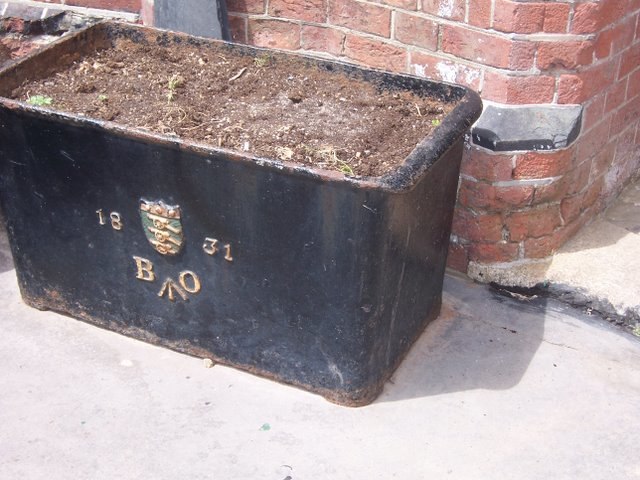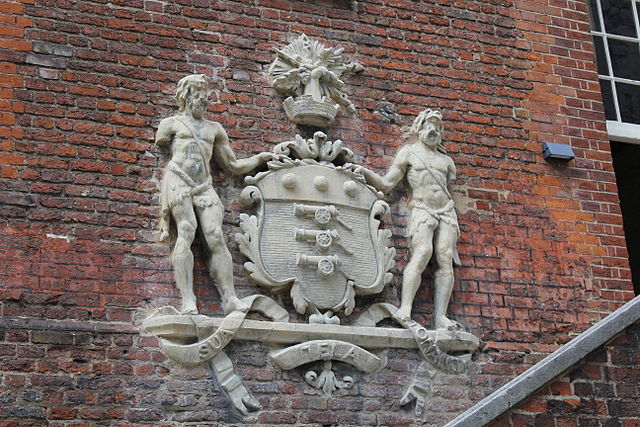A broad arrow, of which a pheon is a variant, is a stylised representation of a metal arrowhead, comprising a tang and two barbs meeting at a point. It is a symbol used traditionally in heraldry, most notably in England, and later by the British government to mark government property. It became particularly associated with the Board of Ordnance, and later the War Department and the Ministry of Defence. It was exported to other parts of the British Empire, where it was used in similar official contexts.
Ammunition box or coal container dated 1831, displaying Board of Ordnance coat of arms, initials and broad arrow
British convicts in uniforms bearing broad arrows: a late 19th-century print
A broad arrow on a Marconi TF1041B valve voltmeter, indicating Ministry of Defence ownership
An Ordnance Survey benchmark in the UK
The Board of Ordnance was a British government body. Established in the Tudor period, it had its headquarters in the Tower of London. Its primary responsibilities were 'to act as custodian of the lands, depots and forts required for the defence of the realm and its overseas possessions, and as the supplier of munitions and equipment to both the Army and the Navy'. The Board also maintained and directed the Artillery and Engineer corps, which it founded in the 18th century. By the 19th century, the Board of Ordnance was second in size only to HM Treasury among government departments. The Board lasted until 1855, at which point it was disbanded.
Shield of the Board of Ordnance preserved on a gun tampion in Gibraltar
Lord Vivian in uniform of Master-General of the Ordnance. The two senior officers of the Ordnance wore uniforms as for a general and lieutenant-general respectively, but of blue cloth with scarlet facings (rather than scarlet with blue).
Full coat of arms, with crest and supporters, at the Tower of London
Ammunition box with Board of Ordnance shield, initials and broad arrow.







